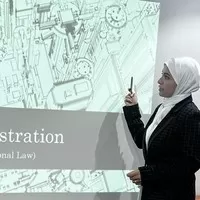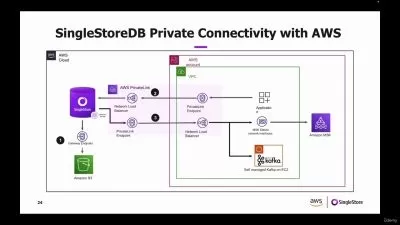Delay Analysis Methods & Concurrent Delay Approaches
Ghosoun Hashem
1:17:14
Description
Learn various delay analysis methods & its application and various concurrent delay approaches & its conditions.
What You'll Learn?
- Delay Analysis Definition, Categories, Causes, Strengths and Weaknesses, methods to apply and required data for each method
- Delay Analysis Techniques (as-planned Vs. as-built, updated as-planned Vs. updated as-built, as-planned impacted, time impact analysis, collapsed as-built)
- Concurrent Delay Definition, Complexity and referred Contractual Provision
- Different Approaches of Concurrent Delay (Dominant Cause, The Malmaison Approach, Apportionment and The Devlin Approach)
Who is this for?
What You Need to Know?
More details
DescriptionThis course explores all issues about construction delays, its definitions, causes and impact, associated ramifications. Concurrent Delays are considered as one of the law problematical areas and most complicated & controversial kind of delay disputes. This is due to its unique/complex nature and the fact that there is no one standard and agreed coherent definition or interpretation of concurrent delay. We herein proposed various options for definition of concurrent delays, which its selection depends on how both parties agreed to deal with concurrency, along with proposed contractual bespoke amendments to reflect the same.Also application of detailed CPM delay analysis and application of Dominant Cause if applicable, “time-but-no-money†approach or Apportionment (preferably Apportionment of Time). And, further recommended the establishment of a UAE dedicated Technology and Construction Court Division that will definitely allow for more efficient resolution of construction industry complex disputes. Plus identifying and analyzing the basis and rules governing the determination of EOT in cases of concurrency under various civil and common law jurisdictions along with court’s relevant approach. It is concluded that Civil Law countries (such as USA, Scotland, Canada and Australia) preferred approach for concurrency is Apportionment. I guarantee it's such an interesting journey, I Hope you enjoy it.
Who this course is for:
- Planners, Contracts Administrators, Claims Engineers and Projects Control Engineers.
This course explores all issues about construction delays, its definitions, causes and impact, associated ramifications. Concurrent Delays are considered as one of the law problematical areas and most complicated & controversial kind of delay disputes. This is due to its unique/complex nature and the fact that there is no one standard and agreed coherent definition or interpretation of concurrent delay. We herein proposed various options for definition of concurrent delays, which its selection depends on how both parties agreed to deal with concurrency, along with proposed contractual bespoke amendments to reflect the same.Also application of detailed CPM delay analysis and application of Dominant Cause if applicable, “time-but-no-money†approach or Apportionment (preferably Apportionment of Time). And, further recommended the establishment of a UAE dedicated Technology and Construction Court Division that will definitely allow for more efficient resolution of construction industry complex disputes. Plus identifying and analyzing the basis and rules governing the determination of EOT in cases of concurrency under various civil and common law jurisdictions along with court’s relevant approach. It is concluded that Civil Law countries (such as USA, Scotland, Canada and Australia) preferred approach for concurrency is Apportionment. I guarantee it's such an interesting journey, I Hope you enjoy it.
Who this course is for:
- Planners, Contracts Administrators, Claims Engineers and Projects Control Engineers.
User Reviews
Rating
Ghosoun Hashem
Instructor's Courses
Udemy
View courses Udemy- language english
- Training sessions 15
- duration 1:17:14
- Release Date 2024/07/25















